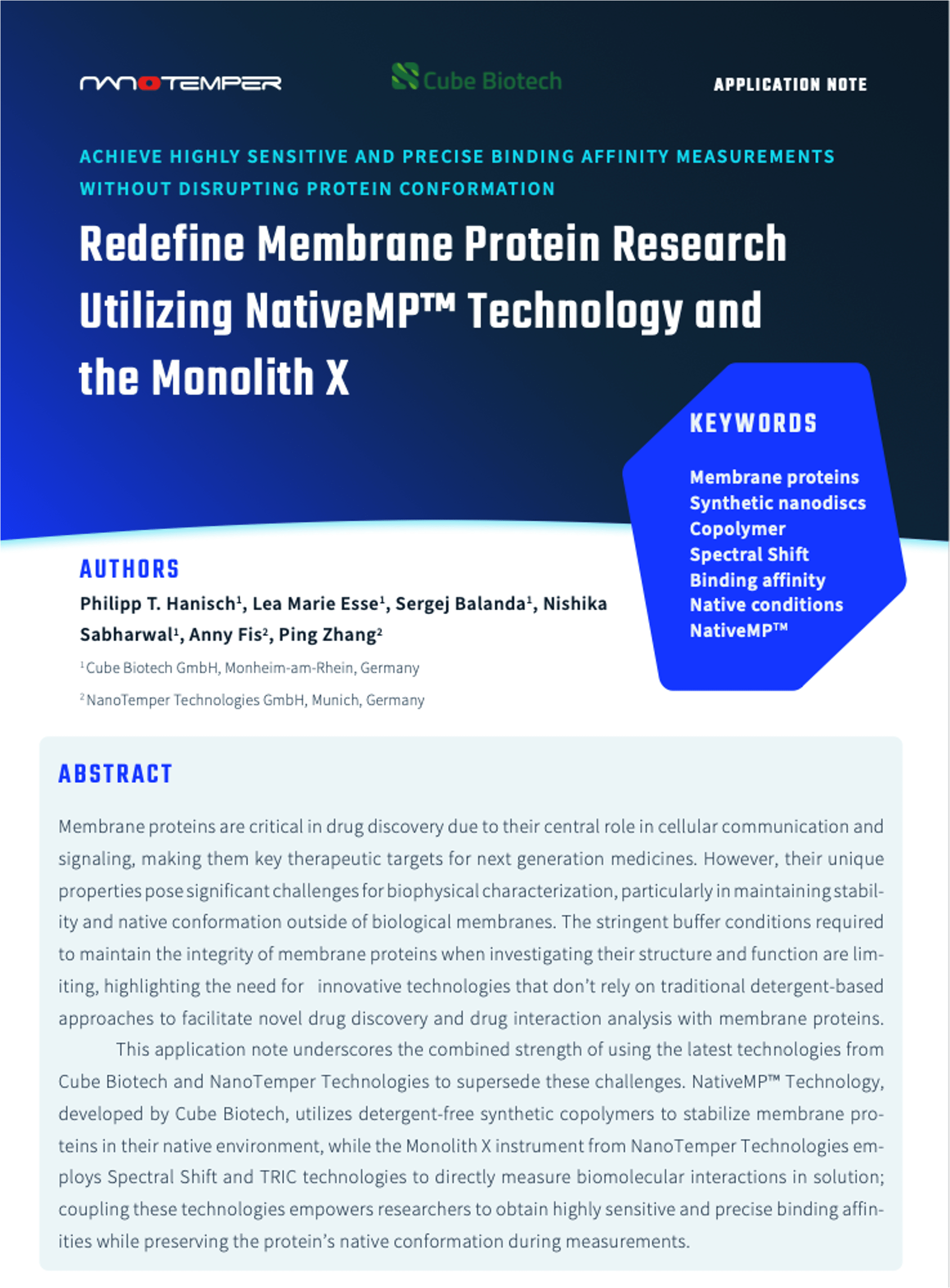Lin B.H., Sutherland M.R., Rosell F.I., et al.
Journal of Thrombosis and Haemostasis 2020, doi: 10.1111/jth.14790
Abstract
The cell membrane‐derived initiators of coagulation, tissue factor (TF) and anionic phospholipid (aPL), are constitutive on the herpes simplex virus type 1 (HSV1) surface, bypassing physiological regulation. TF and aPL accelerate proteolytic activation of factor (F) X to FXa by FVIIa to induce clot formation and cell signaling. Thus, infection in vivo is enhanced by virus surface TF. HSV1‐encoded glycoprotein C (gC) is implicated in this tenase activity by providing viral FX binding sites and increasing FVIIa function in solution.
Topics: Virology, Monolith – MicroScale Thermophoresis, MST, Publications










